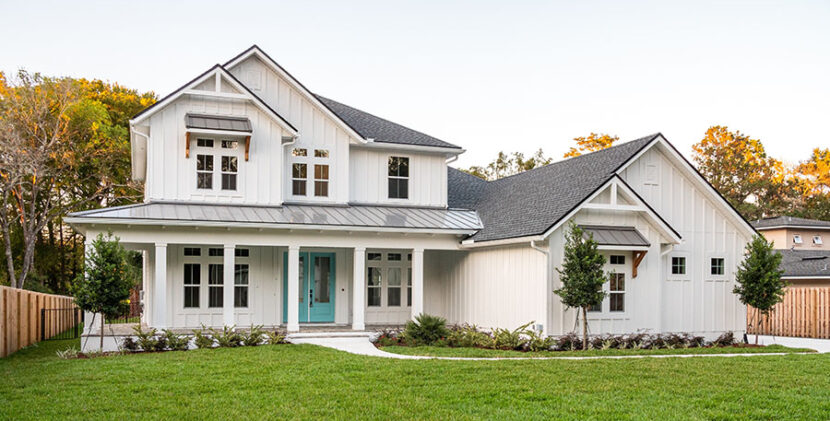Learning Center » Home Improvement
Tips to Get Your Home Ready for Spring

Spring is a symbol of new beginnings, so it’s the perfect time to breathe new life into your home. If you’re going to make it through the summer comfortably, you’ll need to seal up cracks and weatherstrip windows.
After a long year of wear and tear, your insulating features will be under-performing, exposing you to the coming season’s sweltering weather. To make matters worse, your air conditioning bills will climb, so make March your designated month for boosting your R-value.
Perform an energy audit
You might think of a home energy audit as an assessment of your HVAC efficacy, but insulation is a core element of the process. A professional audit will identify areas where your home is losing energy, but you can perform a cursory check. Walk through your home and check for:
- Door and window drafts.
- Gaps along the edges of your flooring, walls, and baseboards.
- Air leakage through electric outlets.
- Backdrafts in your kitchen.
- Degradation in your visible insulation.
A professional energy audit incorporates a thermographic inspection to identify hidden weaknesses in hard-to-reach areas like walls and siding. It tests the heat spectrum via infrared video, both in and outdoors. Your inspector may also use a blower door test to exaggerate and detect weaknesses in your building shell.
From there, your auditor can calculate how much energy your property consumes and what can be done to maximize your air conditioner’s efficiency. That means a cooler summer and reduced electricity bills.
Check your siding
A professional audit can identify how your insulation is performing behind your siding, but you can perform a cursory visual assessment. Peeling siding paint could be a sign that indoor moisture is passing through your wall. If you see chalking or oil-based stains, you might need a recoat, but don’t ignore the deeper cause. While you’re outside, check that your siding isn’t exposed to overgrown landscaping. This can create a moisture problem that’s ripe for infestation.
This is the season to prune back your landscaping. Moisture can leak through your interior, too, causing deterioration and rotting. A professional will use a moisture meter to confirm your suspicions.
Some siding woes can be repaired, but if you see cracks, warps, and widespread rot, it makes financial sense to replace it entirely. This is particularly relevant if your siding is nearing its 15th year. Patch repairs are wasteful if your cladding is a year or two from failing.
Repair your roofing
Your roof is your home’s first point of contact with the sun. Its protective role keeps your foundation intact, but it also has insulating features. If you’re entering the rainy season, a failing shingle can lead to widespread deterioration of your insulation and cladding. That damage will force your air conditioner to work overtime to achieve its thermostat setting.
That’s the precursor to a heaving utility bill. Your roof’s position makes it difficult to assess from the ground, but don’t be tempted to perform a DIY inspection. The death rate for roofing-related work is 29.9 in every 100, 000 people, so this isn’t the kind of inspection you can perform without safety equipment.
In short, never walk on your roof, but never waltz into summer with failing shingles either. It could cause expensive damage to your bricks and mortar. Whether you’re considering a comprehensive repair or a full reroofing project, the results will keep your home cool and infestation-free.
Weatherstrip your windows
Degraded windows are notorious for their lack of thermal resistance. You can’t create a climate-controlled home with substandard weatherstripping, so spring is the season to address those thermal intrusions. A little foam and caulk will go a long way, but if you still have single-pane windows, it might be time for a full replacement.
Upgrade your drainage system
Your roof can’t do its best work if it’s weighed down by water and debris. If your drainage system hasn’t been maintained all winter, summer weather could mean leakage that’s devastating to your foundation. Your downspouts and gutters should be inspected before winter and summer, but you can improve their functionality and lifespan with gutter guards.
This is one of the most economical and useful investments you can make into your roofing. It will keep your shingles dry and free of degradation. Blocked gutters are Bug Central for pests. They also draw moisture towards your property, and rot is swift to follow.
Your property needs more than a mere decluttering during spring, so don’t limit yourself to annual spring cleaning. Reassessing your housing envelope will prevent damage from creeping into your deeper infrastructure. Your soaring R-value will bring extra comfort and even better health. Your air quality will rise, and your repair expenses will fall. Now that’s the kind of balance we can get behind.
Need help with a home improvement project? Click here for a free estimate on windows, roofing, siding or gutters from 1-800-HANSONS.
Get a Free Estimate Today
70% off installation. Special financing available. See details.













